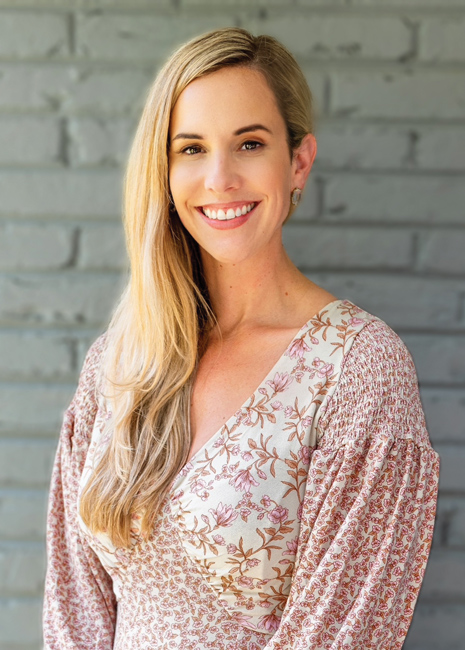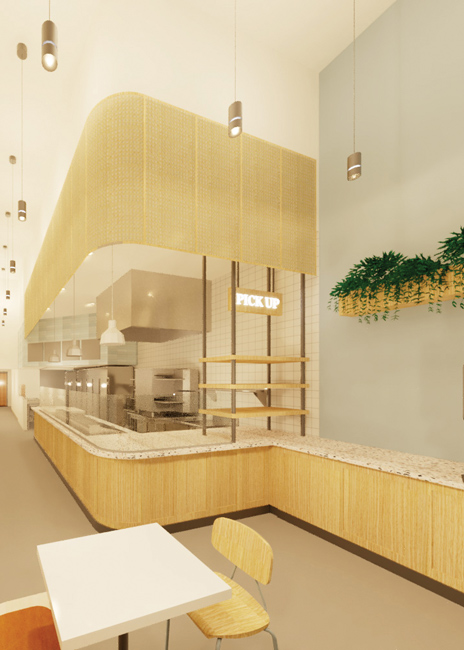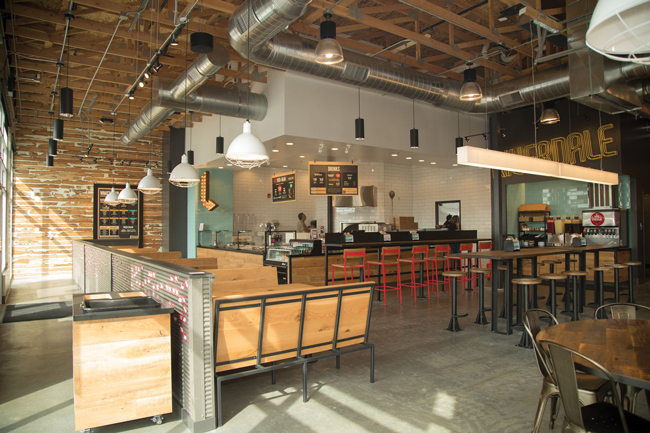 Stacie Colburn HayesFounded in 2015 in Nantucket, a tiny island off Cape Cod in Massachusetts, Oath Pizza promises 100% feel-good pizza. The chain’s hand-stretched dough is grilled and seared in avocado oil and then quick-cooked in a custom oven. The menu offers personal pizzas that accommodate a variety of dietary preferences and sensitivities including vegan, gluten-free and dairy-free options. The burgeoning chain survived the rough waters brought on by COVID-19 and now has 30 units.
Stacie Colburn HayesFounded in 2015 in Nantucket, a tiny island off Cape Cod in Massachusetts, Oath Pizza promises 100% feel-good pizza. The chain’s hand-stretched dough is grilled and seared in avocado oil and then quick-cooked in a custom oven. The menu offers personal pizzas that accommodate a variety of dietary preferences and sensitivities including vegan, gluten-free and dairy-free options. The burgeoning chain survived the rough waters brought on by COVID-19 and now has 30 units.
Emerging from a tumultuous time for the industry, Oath has big plans. The chain plans to roll out a brand refresh and has a scalable new design prototype in the works. “This refresh allowed us to incorporate the things we were really inspired by — our roots, where we come from and our flagship location on Nantucket Island,” says Merissa Zaltzberg, director of brand and digital experience for Oath Pizza. “We introduced a breezy, warm, fresh and inviting color palette. We also wanted to focus on the timelessness of some things with fresh photography, strong typography and updating our brand voice and tone.”
The redesign moves away from bold colors and abstract graphics to a “friendly, understandable and relevant” vibe, says Zaltzberg. “A good brand is a flexible one. We always say we serve 100% feel-good pizza and we wanted to express that visually.”
The brand refresh included updating the flow and makeline areas with an emphasis on improving the ordering experience for on-site guests. That included adding a theatrical element by creating a semi-open kitchen concept with product visible to guests.
In this interview, Stacie Colburn Hayes, chief marketing officer for Oath Pizza, details what was behind the brand refresh, how the team made it happen and what the chain plans for the future.
How long have you been with Oath Pizza?
SCH: I have been with Oath Pizza for three and a half years, and it’s been really exciting. I was at Chipotle before that. Our CEO and I worked at Chipotle together before, and we were being recruited at the same time. We were each other’s references, and he said, “We have to go do this together. This could be really fun.” That made it easier to transition.
What was the impetus behind the brand refresh?
SCH: It started like a lot of restaurant groups do, where you have a food and community focus, but the organizational focus is not on the brand itself. You want to see if this concept actually works, if people like the food. We started in a tiny seaside shop right in Nantucket on the water and over the next few years we grew. And, with the involvement of brand agencies, over time it ended up becoming a very different concept from the beginning, which was a simple concept that was focused on making people feel good. Originally, the place had the vacation vibes of Nantucket and, while it was still a beautiful concept, the colors were black and yellow. From what I understand it stemmed from a love of the Boston Bruins, and that makes sense because we had a lot of masculine decisions being made at that time.
Oath is unique because our customers are a 60-40 split of women and men, and we know females are making more decisions in the household. So, [the executive team] just thought there’s a big opportunity to freshen our look and feel, and to be sure we’re more neutral in our identity going forward so we are more approachable to the world as it evolves. And so the rebranding was an effort to get back to our roots and reflect who we were in the beginning.
Also, our buildouts were more expensive before, which they usually are for new restaurant groups, but now we have a model that’s really scalable. These changes made it more affordable for us to grow.
What is the ideal build or profile for growth for Oath Pizza?
SCH: That’s another piece we looked at a couple of years ago when we started this process. We had opened in a bunch of cities, but we never had a real estate strategy. We [looked over our holdings and] realized we were most successful in suburban markets, and that we had a model that was attractive to franchisees.
Our ideal buildout at Oath is 800 to 1,200 square feet, which is smaller than most restaurant groups that offer dine-in and takeout. We’re unique in that we don’t require type one venting or gas. We don’t have a gas requirement for our ovens, which means we can open pretty much anywhere. We can even co-occupy space. Everyone loves pizza!
So, the design is intended to adapt to a variety of footprints?
SCH: Yes, exactly. Our first franchisee was Aramark. They came in and said they were looking for a new, fresh brand that younger people would appreciate. They started working with us really early on in 2017, to open in college and university locations and even hospitals and corporate dining. Part of our growth with them was how to figure out how to support a franchise partner like that, who had a lot of buildout types and needs. They really helped us identify concerns in the brand refresh and helped us in the process of creating something that was adaptable but had the same look and feel regardless of size.
After Aramark, Covelli Enterprises, the number one Panera franchisee, reached out to us. They had a turnpike location with a Panera Express and they wanted to add an Oath Pizza. It’s in the same line and uses the same staff. So, this refresh was designed with all of that in mind.
What’s the status of your new prototype? And are you facing supply chain challenges?
SCH: Our first location is under construction right now, and the existing locations will all be updated within the next year. Our opening is planned for June in West Hartford. It will be our first Connecticut location as well.
 Scalability is the key to Oath Pizza's new franchise prototype. Image courtesy of Oath PizzaOne of the advantages of doing this right now has been that when we’re ordering new things for this new buildout, if there is an issue with the supply chain, we can select alternate options. It’s giving us flexibility going forward.
Scalability is the key to Oath Pizza's new franchise prototype. Image courtesy of Oath PizzaOne of the advantages of doing this right now has been that when we’re ordering new things for this new buildout, if there is an issue with the supply chain, we can select alternate options. It’s giving us flexibility going forward.
And Oath has just opened their franchising efforts up, yes?
SCH: Yes, we just opened our franchise opportunities up to everyone, and we’ve seen a ton of interest. It comes down to scalability. Our menu is really simple and flexible. It also helps that our locations only require one to four people to operate each shift. Our model is positioned well for the staffing and supply chain challenges we’re all facing right now. In addition, we already have a national network because of Aramark.
What kind of technological integration have you done to prepare for growth?
SCH: Along with looking at the branding and overall mission and values, we also looked at technological infrastructure, and knew it would be wildly different in five years — and that was before COVID. We really looked at how to make our experience more seamless for both the teams in the restaurants and our guests. So, we put direct ordering in place with white label Door Dash drive on the backend. We rolled out our app, loyalty program and online ordering. We eliminated all the tablets by employing [a third-party solution for multiple deliver services.] All of our technology upgrades were done by 2019, so we were in a lucky place when COVID started.
What’s your current pipeline and growth plans?
SCH: We are focused on fast growth, and we have a couple of corporate locations we are opening this year. Then we are looking at more new sights and aim to grow from corporate size every year. Our franchise agreements are picking up, and we have had two multi-unit deals this year, in new markets: one is outside L.A., and one is in Seattle. We also have a bunch more that we are close to announcing.
We are going to grow through franchise partnerships. This year, it’s about making sure these first locations are up and running without a hitch. And we’ll move on from there. We also plan to pursue CPG [consumer packaged goods] opportunities like selling our crust through wholesalers and retailers.



